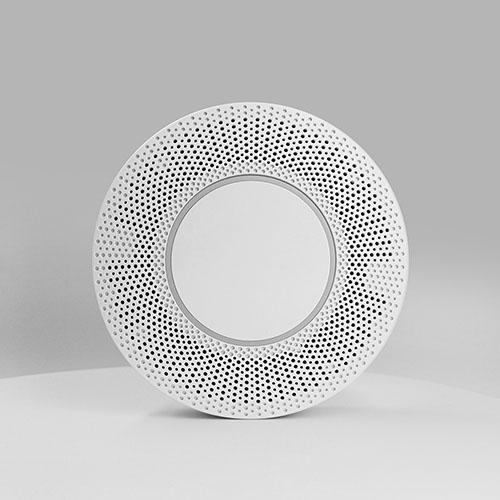Indoor air quality monitor for commercial building
Commercial building are usually places with high traffic flow, and a large number of people indoors will increase the level of pollutants in the air, such as carbon dioxide, formaldehyde, and particulate matter. Real-time monitoring of indoor air quality in commercial buildings can detect potential air pollution problems and protect the health of employees and visitors. A quality indoor air environment helps to improve employee productivity and comfort. By monitoring air quality and taking appropriate air purification measures, commercial centers can create a more comfortable and pleasant working environment that is conducive to employee productivity and work quality.

To choose an Indoor air quality monitor for a commercial building you need to know these points
1. Choose the right monitor
What air quality indicators do you need to monitor in your commercial building? Thinking about this first will enable you to quickly decide on the right air quality monitor for you. Generally speaking, as an Indoor air quality monitor for commercial buildings, it needs to be able to measure several pollutants, thus allowing managers to have a more comprehensive picture of air quality and provide effective insights for optimizing indoor air.
In addition, various building certifications have requirements for monitoring indicators. Depending on the requirements of the different certification standards, three to four pollutant indicators generally need to be evaluated, such as PM2.5, CO2, and TVOC. In addition, certain certifications require additional monitoring of temperature and humidity.
Based on our industry experience, we recommend that you choose TVOC, CO2, and PM2.5 as the three basic air indicators for monitoring, and on this basis, it is best to have the flexibility to customize the monitoring indicators according to your needs.
2. Consider how the data is measured, displayed, and stored
Whether you are collecting air data to meet building certification requirements or to further enhance the indoor environment, you need to consider the appropriate measurement, presentation, and storage methods for your project, and then use this as the basis for selecting an air monitor that meets your data needs.
What is the measurement interval of your air quality monitor? Can it meet your data presentation needs? These are all factors you need to consider.
And in terms of data storage, do you need to access your data to the network and upload it to the cloud? Does your air tester support the network environment of your space? If you wish to store your data locally, what data download methods does your air monitor support? How much memory does it come with and how many data points can it store? These specific questions need to be taken into consideration when you choose the right air monitor.
3. Support interconnection with building system integration
With the advancement of technology, building automation management has become a trend. By connecting the air quality monitor to the building control system, you can control and optimize the HVAC and air filtration system to save energy and reduce operating costs. Nowadays, you can connect air quality monitors to your building system through a variety of technologies, such as API, Modbus, Local MQTT, BACnet, etc. Therefore, you need to choose an air quality monitor that can match your building system.






